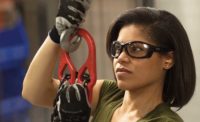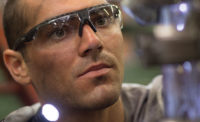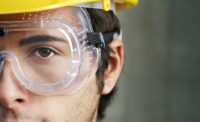The face of today’s workforce is changing rapidly – it’s comprised of more women, more millennials, and more ethnicities than ever before. While employers are responsible for providing the personal protective equipment to keep all their workers safe, a one-size-fits-all approach rarely meets the needs of each individual. This is especially true when it comes to safety eyewear.
Because they enable our sense of sight, eyes are arguably our most valuable organ. Therefore, protecting workers’ eyes can be viewed as an invaluable investment in workforce wellbeing. However, finding safety eyewear that protects and properly fits the diverse head sizes and facial profiles across the modern workforce can feel like an insurmountable challenge.
Protection comes first
First and foremost, employers are responsible for outfitting workers with eye protection suitable for the hazards present. At a minimum, the American National Standards Institute (ANSI) calls for all safety eyewear to meet the ANSI Z87.1 standard for impact protection. Such general purpose safety eyewear is intended to protect the eyes from contact or penetration from airborne particles, flying debris or falling objects.
A hazard assessment will reveal whether additional protection is necessary. If chemical splash or dust hazards exist, for example, sealed eyewear or goggles should be provided, and must be rated for the type of chemicals present (see material safety data sheets for details). In environments where high impact hazards exist, eyewear rated for military-grade ballistic protection should be considered.
Light is an easily overlooked hazard, yet exposure to visible and invisible radiation can cause short-term and oftentimes permanent vision loss. In fact, extended exposure to the sun's ultraviolet rays has been linked to eye damage including cataracts, macular degeneration, pterygia and photokeratitis. Workers who spend any time outside should be outfitted with eyewear that ensures 99.9% ultraviolet protection. Specialized lens tints should be considered as needed to block radiation or support visual function based on the other types of natural and artificial light present.
A proper fit is a safe fit
The ANSI standard for eye protection (Z87.1-2015) calls for eyewear to fit workers properly – and it’s not just for comfort’s sake. While it’s true that workers are more likely to leave eyewear on when it’s comfortable, fit is also supremely important because it ensures the eyewear is where it needs to be in the event of impact. Eyewear that slips out of place away from the eyes simply won’t keep objects, particles, light or chemicals out.
Considering the endless variety of head sizes and face shapes – including differences in the height, width and location of cheekbones, nose bridges and ears – it might seem virtually impossible to find a single eyewear style that delivers the ANSI-required proper fit to each individual worker. That’s where advances in fit and comfort come in.
Well-fitting eyewear stays securely in place, even when workers are out of position or moving vigorously. Look for styles with adjustability features for a personalized fit. Opting for grippy nosepiece or temple materials will deliver a no-slip fit and ensure eyewear is where it needs to be to protect the eyes in the event of impact. Properly fitting eyewear also delivers a gap-free fit to keep debris, dust, pollen, smoke and light out of the eyes.
Comfort is king
It’s a fact: when eyewear doesn’t feel comfortable, workers are more likely to remove it – even in the presence of hazards. When selecting safety eyewear, comfort is a vital consideration. New styles with adjustability features and advanced materials make achieving comfort easier than ever.
First, look for eyewear that’s lightweight. Heavy eyewear is prone to sliding down the nose bridge, which is not only distracting but leaves the eyes unprotected. Heavy eyewear also causes painful pressure points and headaches. For eyewear with a barely-there feel, opt for new ultra-lightweight styles.
Next, seek styles made with advanced materials that cushion the temples, nose bridge and brow. Soft materials reduce pressure points, while advanced grippy rubber compounds contribute to a secure, stay-put fit. Ratcheting temples allow the wearer to customize fit so the eyewear sits comfortably behind the ears, against the cheeks and in front of the eyes at an optimum viewing angle. (Remember the requisite snug, gap-free fit?)
Wraparound temples flex to fit a wide range of head widths, while broad 9-base lenses deliver the greatest peripheral field of view.
Comfort and style go hand in hand. If a worker feels their eyewear looks good, they’re more likely to feel comfortable putting it on – and leaving it on – all day long. Don’t overlook the importance of choosing modern styles such as sport-inspired sunglass designs or sophisticated metal frames to support wear. These days, many safety styles look so good workers won’t want to remove them when their shift ends!
Ensure clarity
As the seasons change, so do the temperatures workers are exposed to. From extreme summer heat to winter’s harsh cold, outdoor temperatures and humidity often differ from climate controlled work environments. That poses major fogging risks to safety lenses. Any changes in temperature – even subtle variations – can cause lens fogging. Exertion is another leading factor causing fogging. In fact, fogging is the No. 1 complaint of most safety eyewear users.
When lenses fog, workers can’t see their work – or nearby hazards – leaving them few choices but to remove the eyewear to wipe it clear. If they do so in the work zone, work is interrupted and they risk injury to their eyes and body. If they do so outside the work zone, productivity takes a greater hit.
The best solution for combatting fog is to opt for an advanced anti-fog lens coating. Those that are proven to stay on after repeated washings and wiping will stand up best in the hottest, most humid and demanding workplaces. Anti-fog coatings that feature dual-action hydrophilic (water absorbing) and hydrophobic (water repelling) properties deliver the most effective results. Likewise, those that are permanently bonded to the lens in a controlled application method with vigorous product monitoring ensure the greatest performance for the longest possible duration.
Delivering eyewear with the protection, comfort, fit and function to ensure all-day wear among America’s increasingly diverse workforce is a tall order. Yet by selecting styles that meet all these criteria, workers can safely focus on the task at hand – not on the distractions of ill-fitting eyewear. Employers who seek out the latest advances in safety eyewear make a visible commitment to worker wellbeing, a benefit everyone sees merit in.



